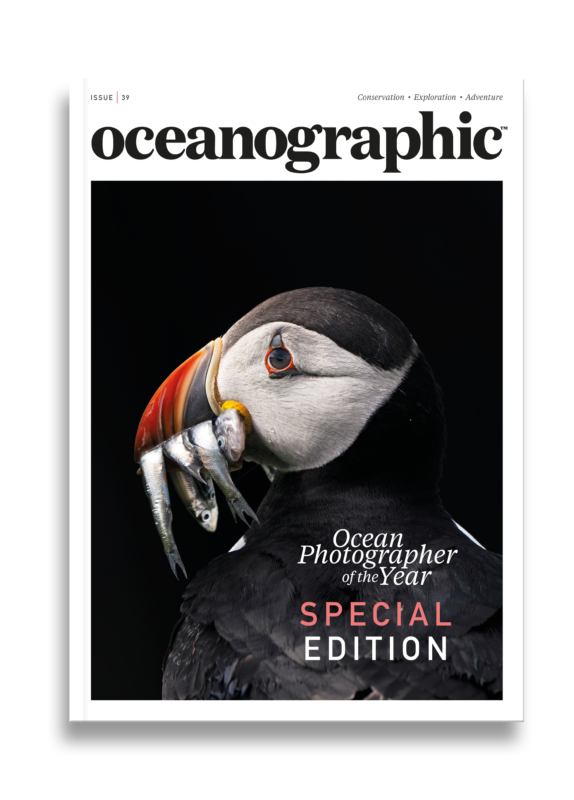Azores creates Europe's largest Marine Protected Area
An area covering almost 300,000 square kilometres, the newly designated Marine Protected Area is now the largest in the North Atlantic network.
A groundbreaking new piece of legislation to designate the largest Marine Protected Area network in the North Atlantic has just been passed, marking a historic milestone to safeguard 30% of the sea surrounding the Azores archipelago.
With world leaders now gathered at the UN Biodiversity Conference COP16 in Colombia this week, the decision provides a much needed propulsion to an internationally agreed framework to protect 30% of the world’s lands and oceans by 2030.
An area covering almost 300,000 square kilometres, the newly designated Marine Protected Area is now the largest in the North Atlantic network. Half of this area will receive full protection from any and all extractive practices, marking it as a safe haven for biodiversity and natural resources. The other half of the network will be a ‘highly protected area’, meaning it will allow ‘light’ extractive activity only.
This, according to policy makers from the Autonomous Region of the Azores marks a ‘significant milestone in global marine conservation’ and sets a powerful precedent for the current negotiations on global biodiversity.
It’s a crucial time for such decisions. Right now, in Colombia nations have convened at COP16 to discuss the vital and immediate next steps to halting and reversing the severe biodiversity crisis. At the same time, nations across the globe are working to implement the Kunming-Montreal Global Biodiversity Framework in which 196 countries have agreed to protect 30% of the world’ lands and oceans by 2030.
The newly adopted legislation ‘leads the way’ for the European Union’s Biodiversity Strategy for 2030 and ‘advances global ocean protection goals.’
Marine Protected Areas are widely recognised as the most effective tool in the global effort to reverse biodiversity loss and build ocean resilience against climate change. The Azores leadership has been earmarked by commentators as ‘particularly inspiring’ given that only 2.8% of the world’s oceans are currently fully or highly protected.
A report issued by Greenpeace International earlier this week warns that at the current rate of development in ocean protection, the United Nations stands to miss its critical 2030 target by a full eight decades. This means the ambitions of the 30×30 target – at the current pace of success – won’t be realised until 2107.



“The Azores has long been known for its unique ocean nature, and with this decision, we are driving the way forward to a productive, vibrant ocean,” said José Manuel Bolieiro, president of the Regional Government of the Azores.
“The sea is an integral part of our collective identity, being vital socially, culturally, and economically. We are committed to protect and recover our ocean to support a healthy blue economy. Our decision through a science-based and participatory process leading to the protection of 30% of our seas serves as an example that other regions must follow now to ensure the future health of the planet.”
The Azores is a Portuguese archipelago of nine volcanic islands in the middle of the North Atlantic Ocean. The Azorean sea, an area of approximately 1,000,000 square kilometres represents 55% of the Portuguese waters and around 15% of the European waters. It also contains some of the most important, unique, and fragile island, open sea, an deep-sea environments in the North Atlantic.
The now approved network of marine protected areas creates a ‘sanctuary for nature’, such as sharks, fish, whales, deep-sea corals, and unique hydrothermal vent ecosystems, all of which are critical for a healthy ocean – an ecosystem upon which the global blue economy and local Azorean community are dependent.
The Regional Government of Azores has attributed the successful creation of this Marine Protected Area to ‘an extensive participatory process’ which, in total, consisted of more than 40 meetings with representatives from various sectors, including those within fishing, maritime transport, maritime tourism, and environmental non-governmental organisations.
“The result was the collaborative design of a network of marine protected areas that benefits people, nature, and the economy, based on the best available science in the region,” said representatives of the Azores.


"*" indicates required fields
Printed editions
Current issue
Back issues

Back Issues
Issue 39 Special Edition: OPY2024

Back Issues
Issue 37 Wild Alaska: River & Ocean
Enjoy so much more from Oceanographic Magazine by becoming a subscriber.
A range of subscription options are available.









